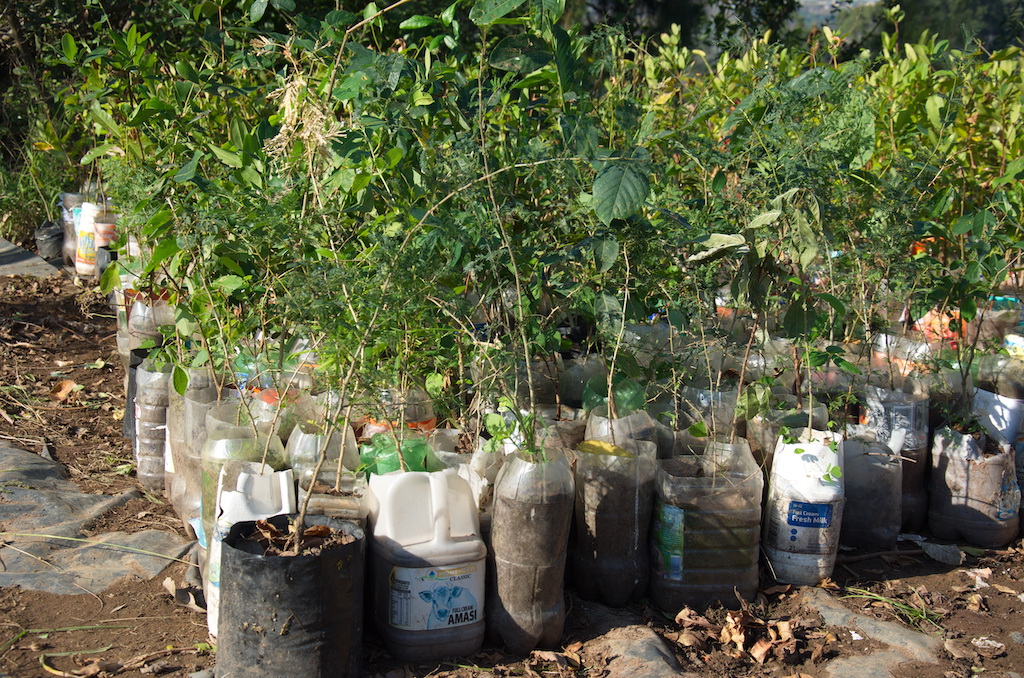


La municipalité d'EThekwini a adopté une approche innovante de restauration des forêts, appelée le concept "Indigenous Trees for Life" (arbres indigènes pour la vie), qui a été développé et mis en place par le Wildlands Conservation Trust. Ce concept implique la formation d'entrepreneurs de l'arbre au sein des communautés bénéficiaires. Les animateurs enseignent aux entrepreneurs d'arbres comment cultiver et entretenir des semis d'arbres indigènes dans des "pépinières domestiques" jusqu'à ce qu'ils atteignent une taille convenable. La formation initiale est dispensée au sein de la communauté et garantit le transfert des connaissances sur les lieux de collecte des graines et la manière de les cultiver. Le soutien et le tutorat se poursuivent tout au long du projet. Les arbres sont échangés contre des notes de crédit, qui peuvent être utilisées pour acheter des produits alimentaires, des bicyclettes, des matériaux de construction, ou pour payer les frais de scolarité ou les leçons de conduite d'un véhicule. En outre, une approche des "moyens de subsistance durables" vise à développer la création de moyens de subsistance en formant les entrepreneurs de la communauté aux techniques de production alimentaire locale. Afin d'améliorer et de renforcer ces avantages, un centre d'excellence pour le reboisement a été créé sur le site du projet de reboisement de Buffelsdraai. Ce centre présentera les techniques de reboisement innovantes, les recherches menées sur place par les étudiants locaux et l'utilisation de technologies durables dans le bâtiment lui-même.
- Le Wildlands Conservation Trust est le partenaire de mise en œuvre désigné qui supervise toutes les opérations de culture et de plantation d'arbres en appliquant son modèle "Indigenous Trees for Life" (des arbres indigènes pour la vie).
- Le processus de construction du centre de reboisement a déjà généré de nombreuses opportunités d'emploi au niveau local.
- Un partenariat avec l'université locale qui encourage la recherche sur une série de sujets pertinents, notamment la restauration écologique, l'adaptation au changement climatique et le développement socio-économique.
- Le projet garantit la création d'emplois locaux et le perfectionnement actif des membres de la communauté, y compris le développement de compétences entrepreneuriales et le transfert de connaissances sur la manière de gérer les risques liés au climat.
- Les arboriculteurs qui produisent de grandes quantités d'arbres sont récompensés par des cours de formation supplémentaires et des possibilités d'apprentissage par l'expérience.
- Le modèle indigène "Des arbres pour la vie" a été étendu à d'autres secteurs de l'environnement, ce qui permet de mettre en œuvre une série de programmes de transformation dans les communautés vulnérables. De telles opportunités, si elles sont sensibles aux menaces et aux besoins des écosystèmes locaux, pourraient bénéficier aux villes de toute l'Afrique et leur permettre de mieux aligner leur développement sur les objectifs du Millénaire pour le développement.
- Le projet pourrait échouer si les autorités locales ne prennent pas d'engagements de gestion à long terme. Il existe un besoin évident d'une approche systématique de la gestion des risques qui mette en évidence les interdépendances positives et évalue et expose les tendances problématiques au fil du temps.
(Douwes et al. 2016).